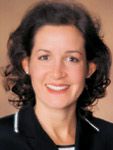- Acne
- Actinic Keratosis
- Aesthetics
- Alopecia
- Atopic Dermatitis
- Buy-and-Bill
- COVID-19
- Case-Based Roundtable
- Chronic Hand Eczema
- Chronic Spontaneous Urticaria
- Drug Watch
- Eczema
- General Dermatology
- Hidradenitis Suppurativa
- Melasma
- NP and PA
- Pediatric Dermatology
- Pigmentary Disorders
- Practice Management
- Precision Medicine and Biologics
- Prurigo Nodularis
- Psoriasis
- Psoriatic Arthritis
- Rare Disease
- Rosacea
- Skin Cancer
- Vitiligo
- Wound Care
Article
The ubiquitous sign-in list: Once useful, old-style clipboard has outlived its purpose
Patient relations experts and practice management consultants often talk about "moments of truth" - those small encounters that can set the tone for the patient's entire experience at a practice.

Key Points

In fact, there's probably a defining moment right now in your office's reception area. It's your sign-in list for arriving patients.
Is the list handed to patients only after they receive a friendly greeting, or is it perched on the ledge outside of a closed window at the reception desk with a handwritten sign saying, "All patients must sign in"?
Over the years, the sign-in list has taken on new roles. In too many dermatology practices, the sign-in list is the receptionist.
Even though you don't ask patients to write down their dermatological complaints or reason for visit on the list, it is a directory of who's been to the dermatologist that day. It's a wonder that confidentiality concerns alone don't make us find another solution.
The sign-in list is a symbol of the fact that we fail to remember that the root word of receptionists is indeed "to receive." Don't "arrive" patients - welcome them.
Automate
Dermatology practices can be busy places. Maybe your staff can't always welcome every patient, but don't let the list-on-the-ledge scenario be your practice's defining moment for patients.
If you can't manage the sign-in process by people alone, let technology help you. There are a myriad of solutions for replacing the sign-in list with a more patient-friendly option. Electronic kiosks, such as those used by airlines and hotels, have been developed for the medical practice setting. Tablet PCs can be handed to patients as they enter. There are also simple, touch-screen, computer-based electronic sign-in options.
Biometric authentication options that use fingerprints to identify patients have become cheaper to install. Some electronic medical record systems now offer biometric authentication, which has the added benefit of eliminating health insurance identity fraud.
Efficient results
Regardless of the technology you choose, arriving patients look for a system that keeps front and back office staff informed.
The system should display arriving patient's names and physicians on screens elsewhere in the practice and, better yet, interface with your electronic scheduling system.
An automated sign-in system also facilitates keeping medical records in the clinical area instead of lugging them from the chart room to the front office to the nurses' station and elsewhere. They sometimes get lost or delayed in the transfer, and they often become the cause of aggravation between the front-office and clinical staff teams.
Automated, patient-driven systems can alert the clinical team of a patient's arrival three to five minutes earlier than a front-office staff member could.
As long as the system is easy to use, you need not worry about alienating patients - most people are quite used to swiping credit cards and punching in numbers to buy groceries and gas, or to do banking.
Patient relations
If you can't accommodate new technology just yet, at least replace your sign-in list with a label system. In such a system, patients sign their names - and other pertinent information - on labels. The labels are peeled off by the front office staff as patients arrived, thus maintaining confidentiality.
Even if you don't change your front office habits, do recognize that patients also keep track of who arrived when. In a busy dermatology practice, there may be a dozen or more patients waiting in the reception area at any one time. If you have multiple physicians and mid-level providers, it's common for patients to be called back in a pattern that doesn't match their arrival times. To avoid patients getting irritated - or even angry - instruct your clinical team to state, "Mr. Jones for Dr. Smith." It's a bit of transparency about your workflow that patients - and your staff who bear the brunt of patients' frustrations - will appreciate.
Vendors offering automated solutions to the sign-in list:
http://www.tangible.com/ http://www.ncr.com/ http://www.medicalcheckin.com/ http://www.phreesiapad.com/ http://www.intellifinger.com/
Ms. Woodcock is a professional speaker, trainer and author specializing in medical practice management. She has focused on medical practice operations and revenue cycle management for more than 15 years. She has authored seven practice management books, including the top-selling Mastering Patient Flow. Ms. Woodcock is a fellow in the American College of Medical Practice Executives and a certified professional coder. She holds a B.A. from Duke University and completed her M.B.A. in healthcare management at the Wharton School of the University of Pennsylvania. For more information, visit http://www.elizabethwoodcock.com/.
Newsletter
Like what you’re reading? Subscribe to Dermatology Times for weekly updates on therapies, innovations, and real-world practice tips.
















